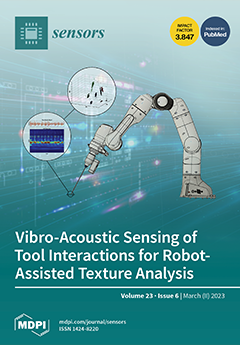Open AccessArticle
Direct Ink-Write Printing of Ceramic Clay with an Embedded Wireless Temperature and Relative Humidity Sensor
by
Cory Marquez, Jesus J. Mata, Anabel Renteria, Diego Gonzalez, Sofia Gabriela Gomez, Alexis Lopez, Annette N. Baca, Alan Nuñez, Md Sahid Hassan, Vincent Burke, Dina Perlasca, Yifeng Wang, Yongliang Xiong, Jessica N. Kruichak, David Espalin and Yirong Lin
Cited by 20 | Viewed by 3884
Abstract
This research presents a simple method to additively manufacture Cone 5 porcelain clay ceramics by using the direct ink-write (DIW) printing technique. DIW has allowed the application of extruding highly viscous ceramic materials with relatively high-quality and good mechanical properties, which additionally allows
[...] Read more.
This research presents a simple method to additively manufacture Cone 5 porcelain clay ceramics by using the direct ink-write (DIW) printing technique. DIW has allowed the application of extruding highly viscous ceramic materials with relatively high-quality and good mechanical properties, which additionally allows a freedom of design and the capability of manufacturing complex geometrical shapes. Clay particles were mixed with deionized (DI) water at different ratios, where the most suitable composition for 3D printing was observed at a 1:5 w/c ratio (16.2 wt.%. of DI water). Differential geometrical designs were printed to demonstrate the printing capabilities of the paste. In addition, a clay structure was fabricated with an embedded wireless temperature and relative humidity (RH) sensor during the 3D printing process. The embedded sensor read up to 65% RH and temperatures of up to 85 °F from a maximum distance of 141.7 m. The structural integrity of the selected 3D printed geometries was confirmed through the compressive strength of fired and non-fired clay samples, with strengths of 70 MPa and 90 MPa, respectively. This research demonstrates the feasibility of using the DIW printing of porcelain clay with embedded sensors, with fully functional temperature- and humidity-sensing capabilities.
Full article
►▼
Show Figures






